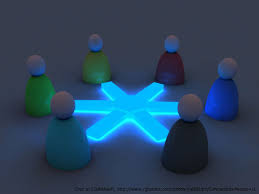The Importance of Building Strong Relationships
Relationships play a crucial role in our personal and professional lives. Whether it’s with family, friends, colleagues, or romantic partners, the connections we form with others can greatly impact our well-being and success.
Building strong relationships is essential for several reasons. Firstly, strong relationships provide emotional support during challenging times. Having someone to lean on and confide in can help reduce stress and improve mental health.
Furthermore, strong relationships foster a sense of belonging and acceptance. When we feel understood and valued by others, we are more likely to have higher self-esteem and confidence in ourselves.
In the workplace, cultivating positive relationships with colleagues can lead to better collaboration, increased productivity, and a more enjoyable work environment. Strong professional connections can also open up opportunities for career advancement and growth.
Communication is key to building strong relationships. Listening actively, expressing empathy, and being honest are essential components of effective communication that can strengthen bonds with others.
Ultimately, investing time and effort into building strong relationships is a worthwhile endeavor that can enrich our lives in countless ways. Whether it’s through acts of kindness, shared experiences, or simply being present for someone in need, nurturing relationships is a fundamental aspect of human connection.
Understanding Relationships: Types, Meanings, Concepts, and Examples Explored
- What are types of relations?
- What does having relations mean?
- What is known as relation?
- What is the definition and examples of relations?
What are types of relations?
In the realm of relationships, there exist various types that define the connections we form with others. These include familial relationships, which are based on blood ties and kinship; friendships, characterized by mutual trust and companionship; romantic relationships, where love and intimacy play a central role; professional relationships, formed in the workplace based on shared goals and collaboration; and casual relationships, which are more transient and less emotionally involved. Each type of relationship brings its own dynamics, expectations, and levels of closeness, shaping the way we interact with those around us.
What does having relations mean?
The term “having relations” typically refers to engaging in sexual activity or intimate interactions with another person. It can encompass a range of physical and emotional connections, from casual encounters to more meaningful relationships. The concept of “having relations” implies a level of closeness and intimacy between individuals, often involving mutual consent and respect. Understanding what it means to have relations involves recognizing the importance of communication, boundaries, and consent in any form of relationship or interaction.
What is known as relation?
In the context of interpersonal dynamics and social interactions, a relation is commonly understood as the connection or bond that exists between individuals. It encompasses the various ways in which people interact, communicate, and engage with one another, shaping the quality and depth of their relationships. Relations can be characterized by factors such as mutual understanding, trust, respect, and emotional intimacy, all of which contribute to the overall dynamics and outcomes of human connections. Understanding what constitutes a healthy and meaningful relation is essential for fostering positive interactions and nurturing strong bonds with others.
What is the definition and examples of relations?
In the context of mathematics, relations refer to a set of ordered pairs that establish a connection or association between elements from two different sets. A relation can be defined as any subset of the Cartesian product of two sets. For example, in a relation R between the set A = {1, 2, 3} and B = {a, b}, if we have the ordered pairs (1, a), (2, b), and (3, a), then these pairs form a relation where each element in set A is related to an element in set B. Relations can be represented graphically, algebraically, or through tables to demonstrate how elements from different sets are connected or related to each other.

